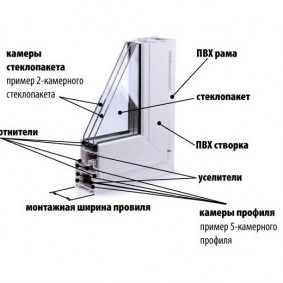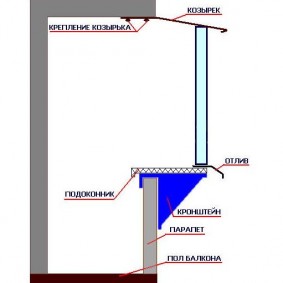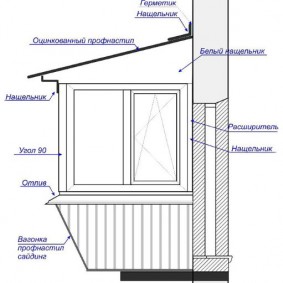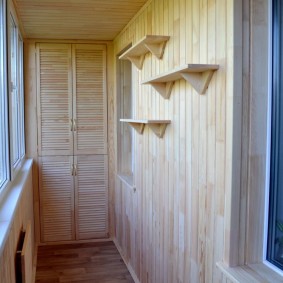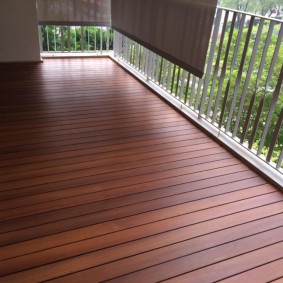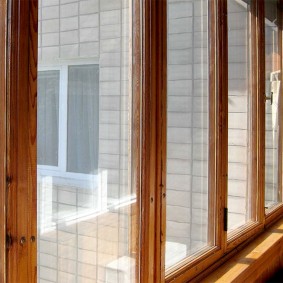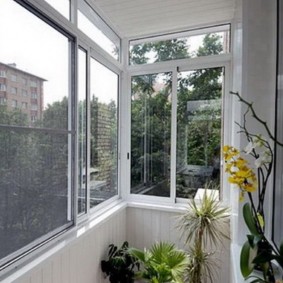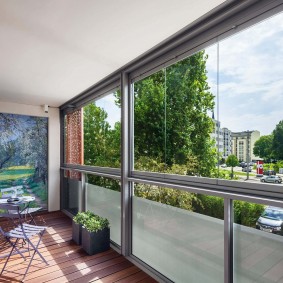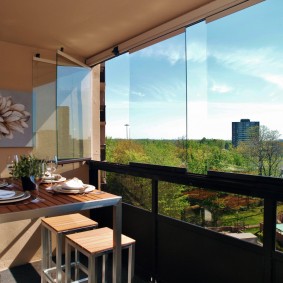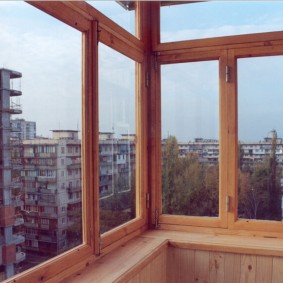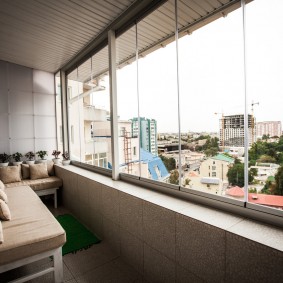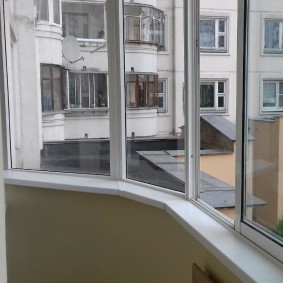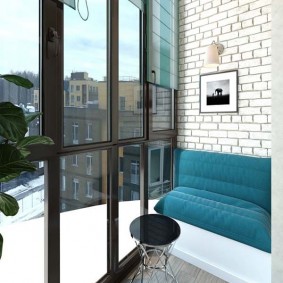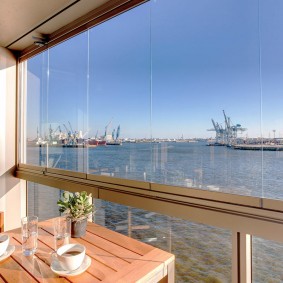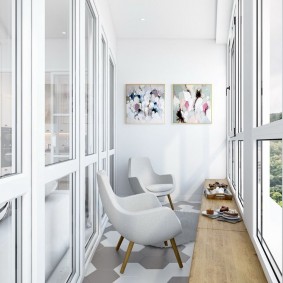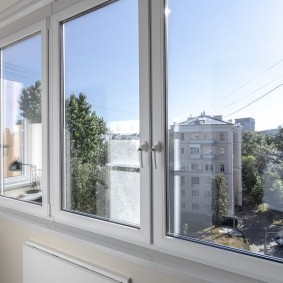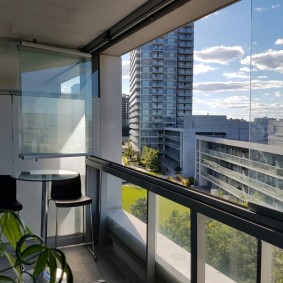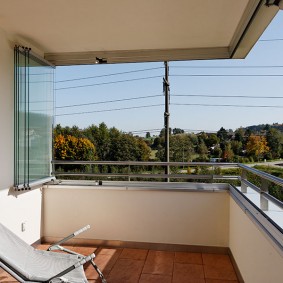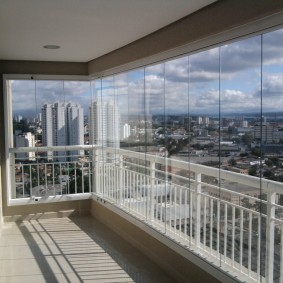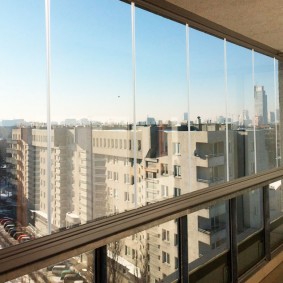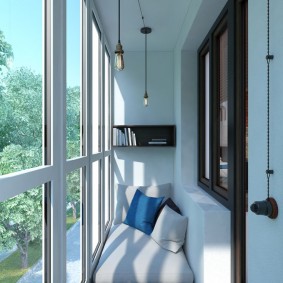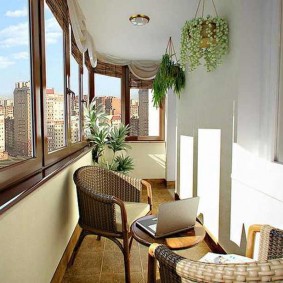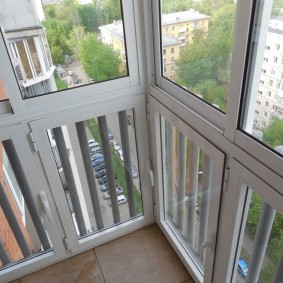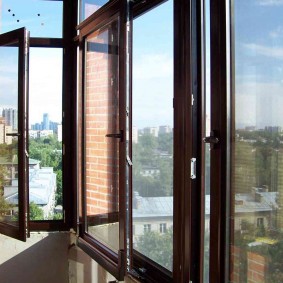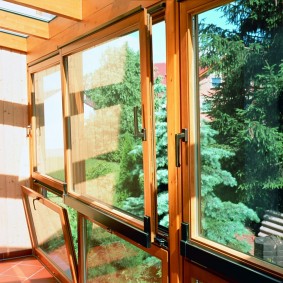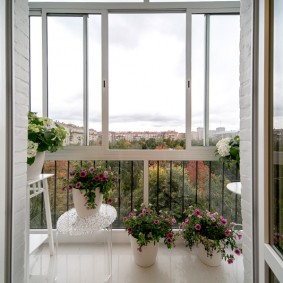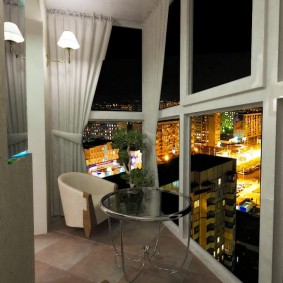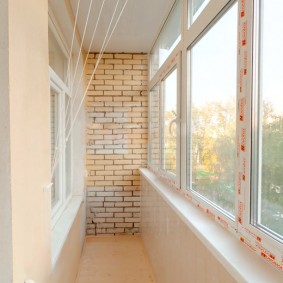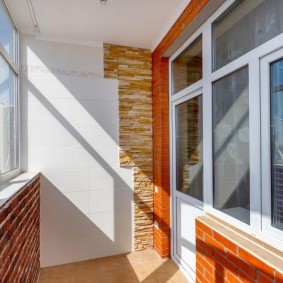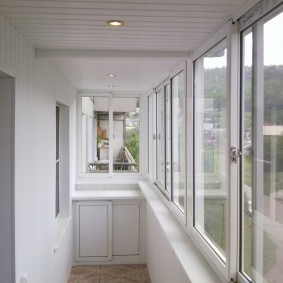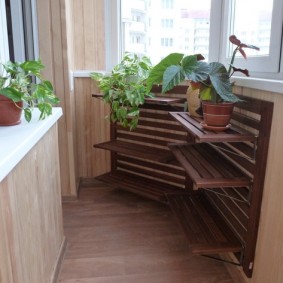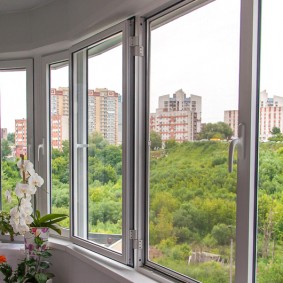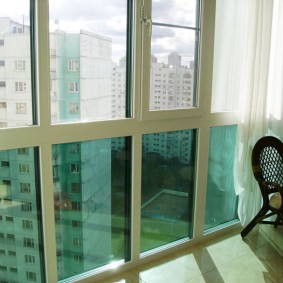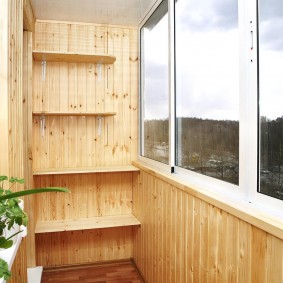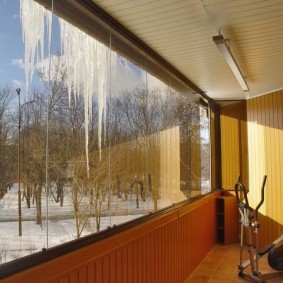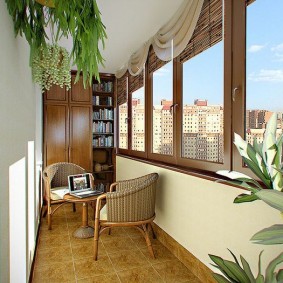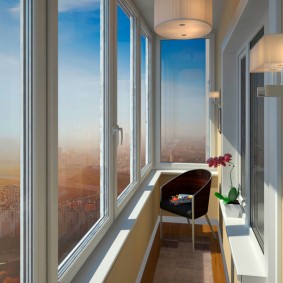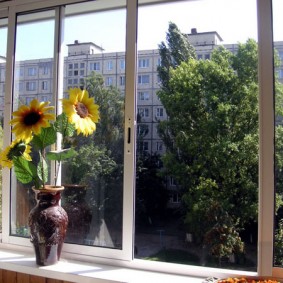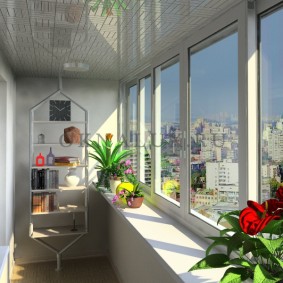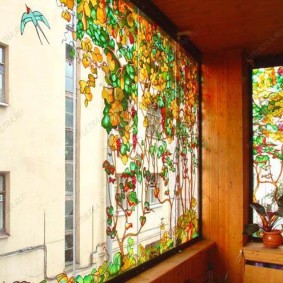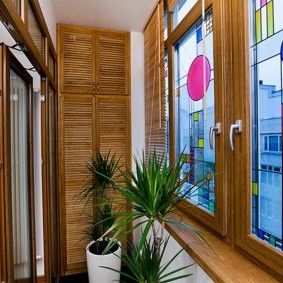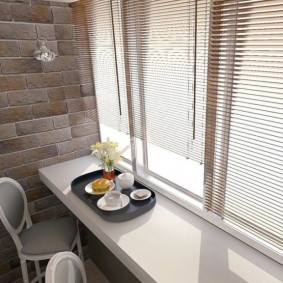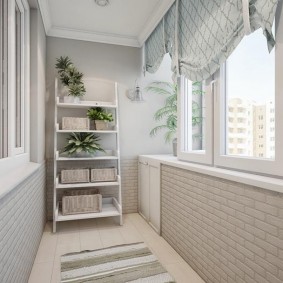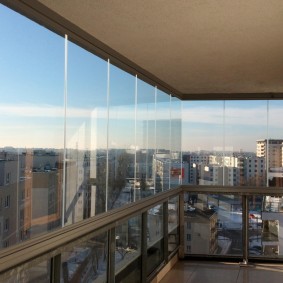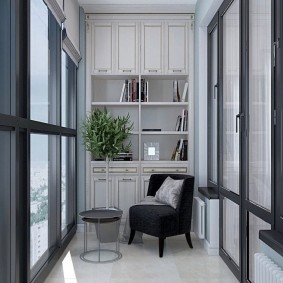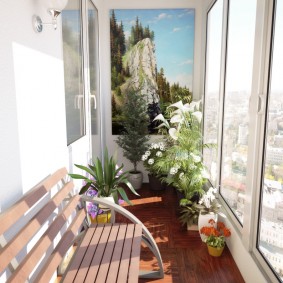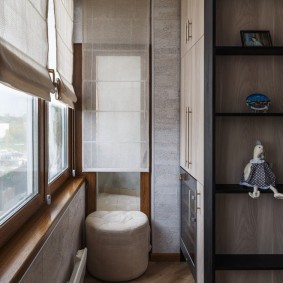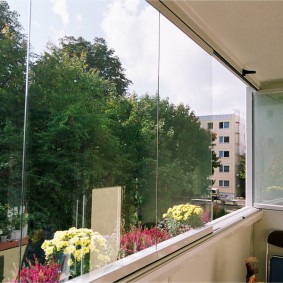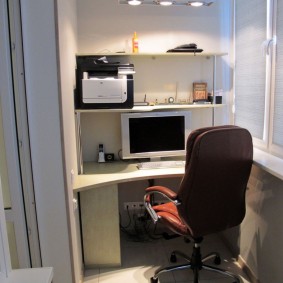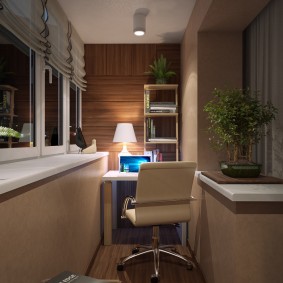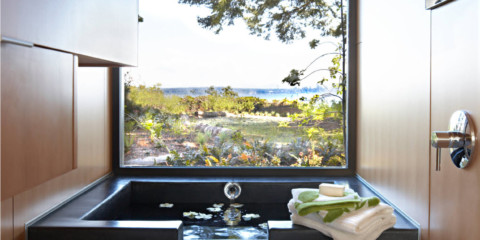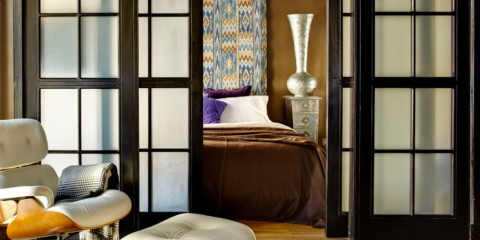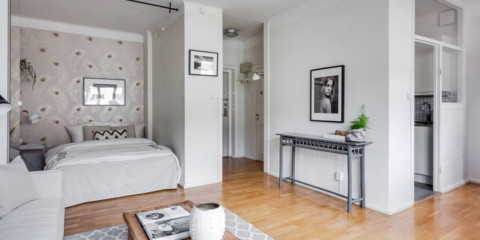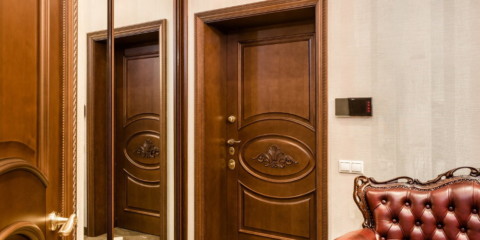 Interior
Wall decoration options with decorative decorative stone inside the apartment
Interior
Wall decoration options with decorative decorative stone inside the apartment
Glazing of balconies is a rather complicated process, requiring impeccable compliance with many requirements and, like any other business, not allowing negligence in relation to oneself. We will talk about how not to make a mistake when carrying out construction work.
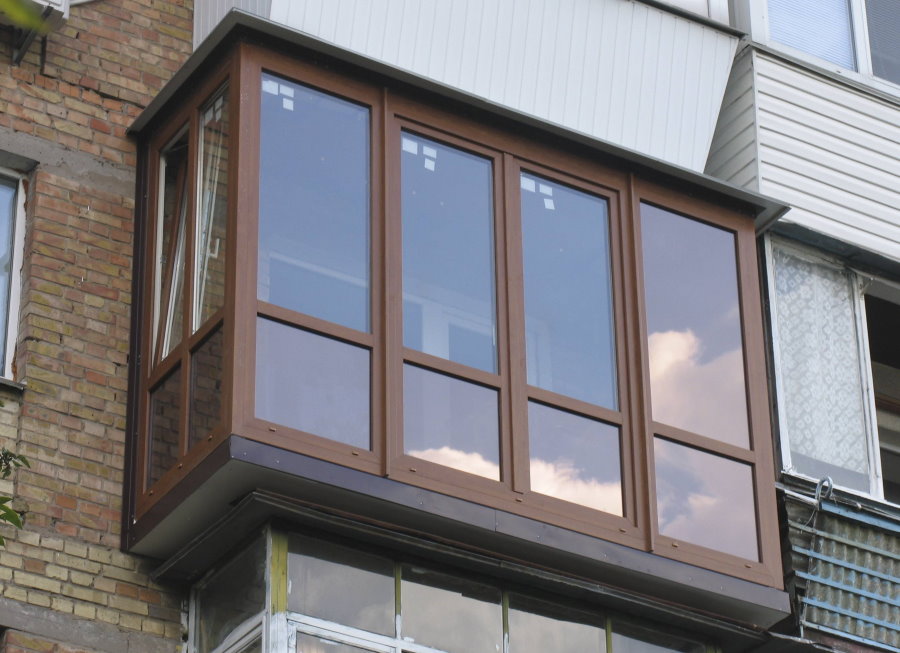
The glazed balcony is protected from rain, snow and dust.
Features of glazing on a balcony or loggia
Content
Glazing balconies is a multidimensional activity. Its basis may be both the need for additional living space, and a banal stylistic interest. And, based on this fact, companies offer certain options for a particular situation. The main thing is compliance with safety requirements.
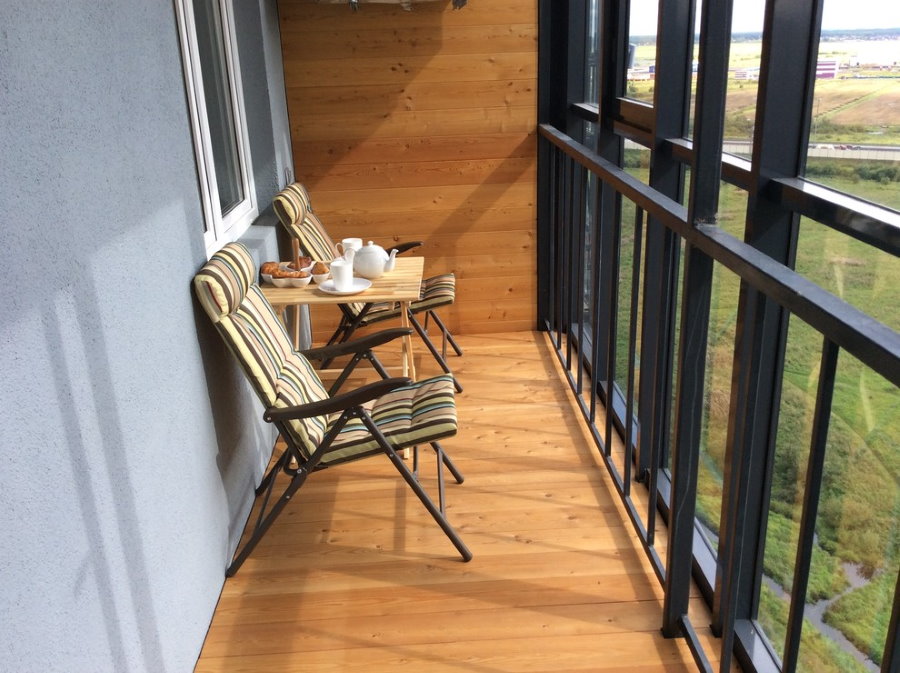
Glazing will give the balcony an aesthetic appearance and create optimal conditions for its improvement
Consider the architecture of the house. It often happens that its design does not allow any interference. Consult your housing company before starting work.
Glazing options for balconies and loggias
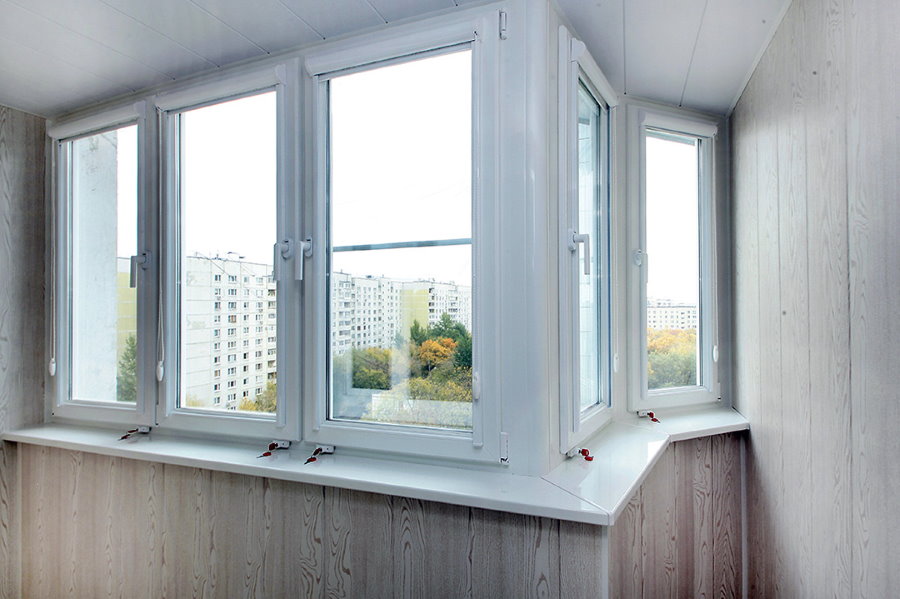
For glazing choose either “warm” or “cold” system, depending on the purpose of the balcony
Warm glazing
Warm glazing of balconies is ideal for those who want to use the extra space as a living or, for example, a workplace. A very interesting idea is a redevelopment for a winter garden.
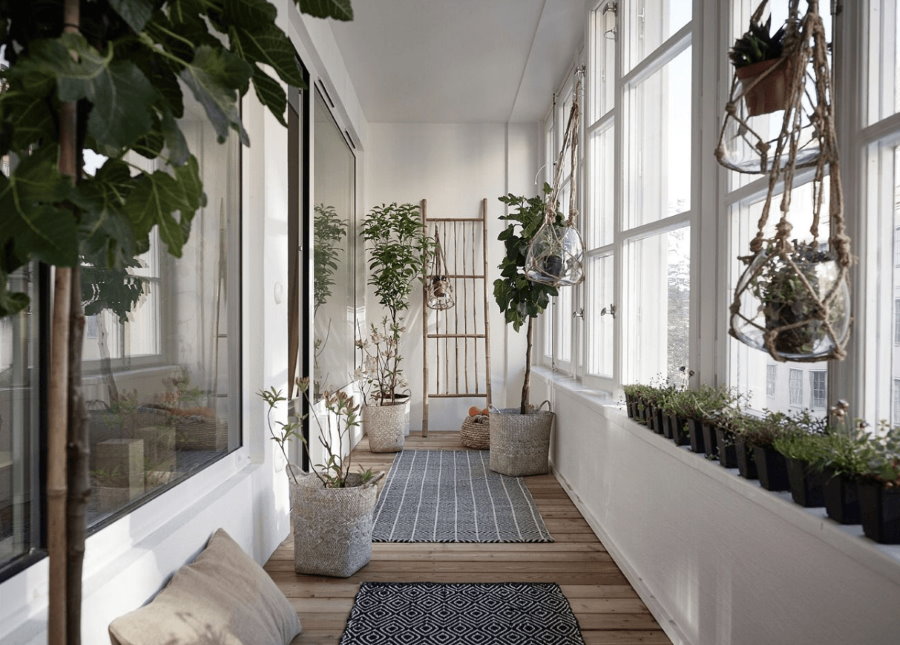
As a result of warm glazing, you get a cozy balcony, perfect for arranging a winter garden, office or gym
For this method, windows made of plastic or aluminum are used. They are completely tight, and therefore reduce to zero the risk of unexpected consequences of precipitation and drafts. Stylish appearance combines aluminum balconies with almost any interior of a typical Khrushchev. And despite the fact that the average price tag for such work is far from small, with proper maintenance, the service life can be 30-40 years. And, most importantly, these loggias do not require special physical and material costs for maintenance - banal washing with a non-abrasive detergent.
If you want to rid yourself of the problem of condensation formation - check the availability of the so-called micro-ventilation system.
Cold glazing
This method is used mainly for public places, when a balcony place acts as a kind of source of fresh air. The durability of this scheme became the basis for its application in ordinary residential buildings. And if the issue of heat conservation is not the main one, then this method of glazing is the most optimal.
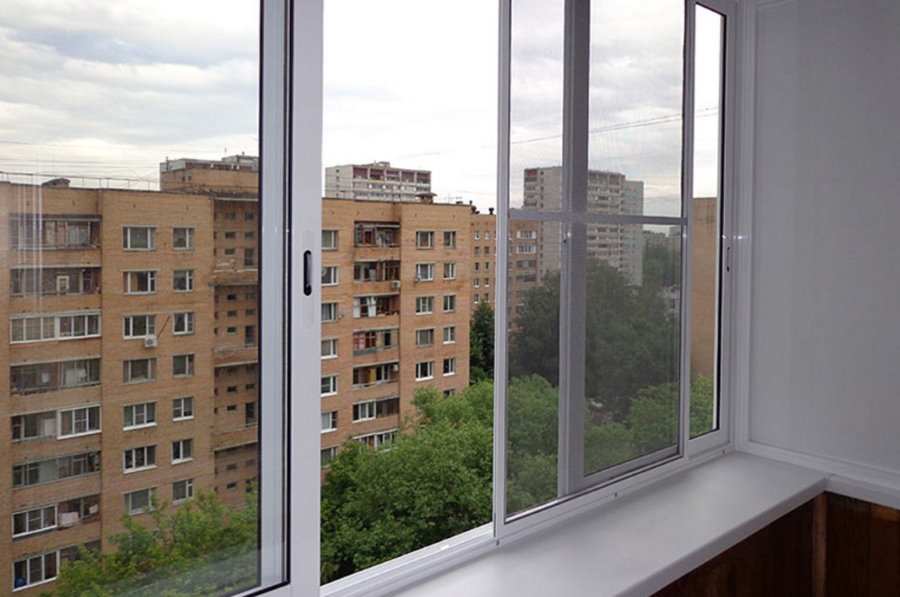
Cold glazing is usually done with an aluminum profile and often has a sliding structure
Pros and cons
Cold glazing
Pros:
- Protected from dirt and rain.
- Short-term installation work.
- Profitability.
Minuses:
- Inadequate use of space.
- Low noise isolation.
- Uncomfortable temperature parameters.
Warm glazing
Pros:
- The presence of additional space.
- Good sound insulation.
- Flight of fancy for design ideas.
- The optimum temperature regime.
Minuses:
- Material costs.
- Duration of installation.
- Care Requirements.
- The need for roof insulation.
- Consideration of the boundary load plate.
Glazing materials
It’s not enough just to decide on the type of glass insert, you also need to decide what will fix them. You can read about the most popular materials below.
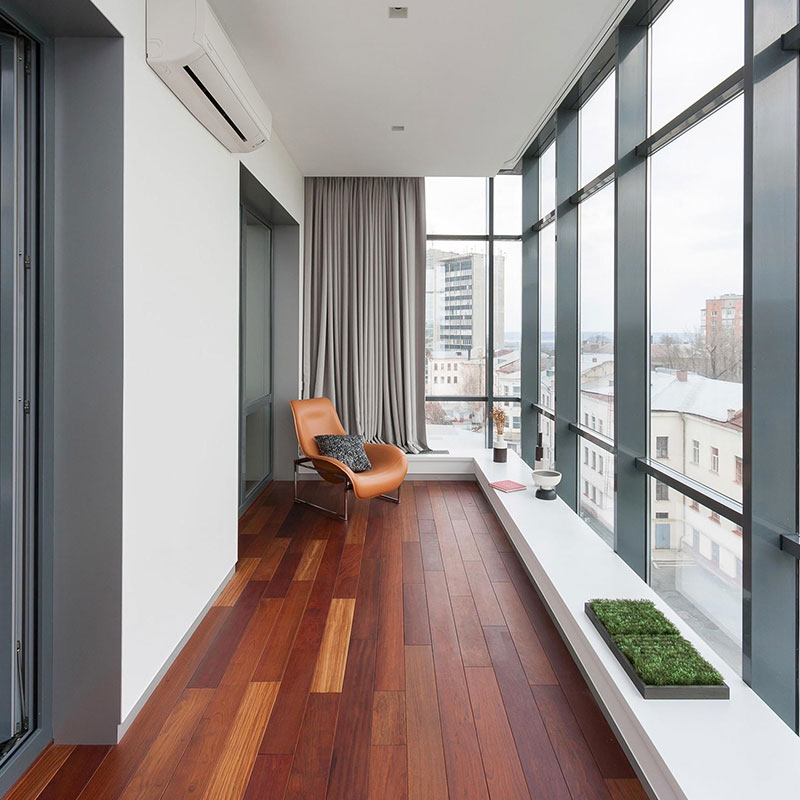
Balcony glazing frames can be made of wood, aluminum or plastic
Tree
Although the tree is far from being used often because of its low operational characteristics, it has several advantages, one of which is its natural beauty.
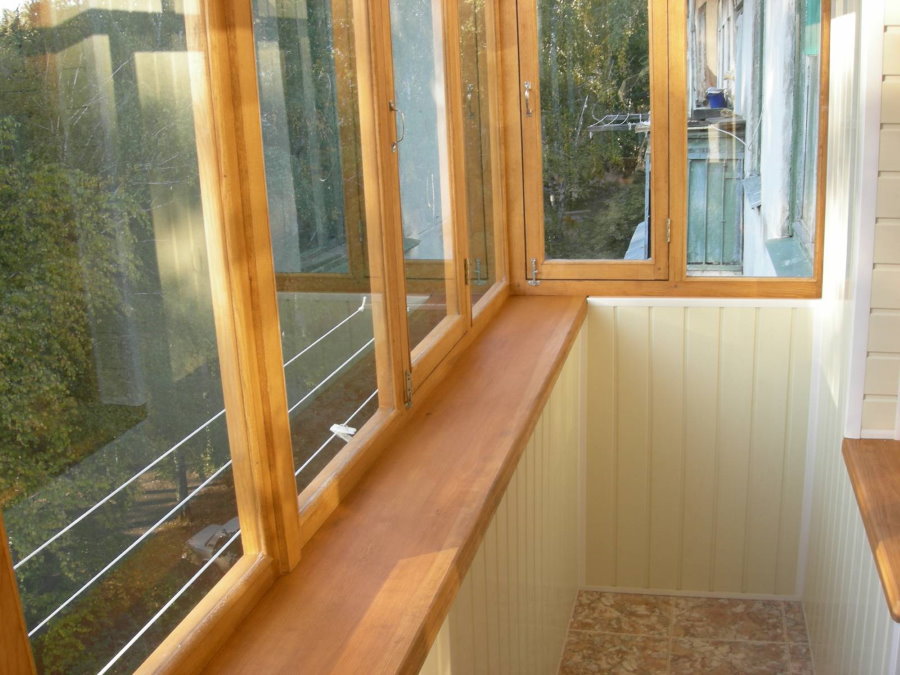
Glazing with wooden frames - an old proven way
Aspects to consider:
- The thickness of the installed glass should be at least 4 mm.
- It is necessary to use additional funds, because the flaps do not fit snugly on the frame and the difference with the outdoor temperature is on average 8-10 degrees.
Use wood structures should only be when there is no question of heat conservation. The most heat-consuming material is a bar. It is used if necessary to maintain heat.
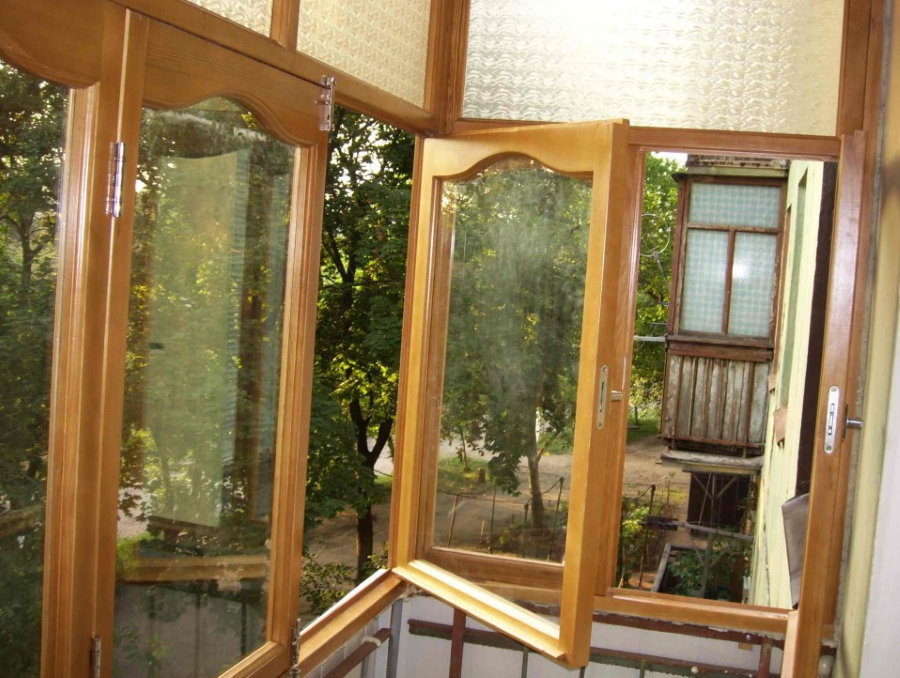
The tree is traditionally chosen by those people who do not trust plastic
Plastic
Most often, when glazing is used not pure plastic, but metal-plastic constructions.
They are characterized by:
- The casement frame is made of a multi-chamber profile reinforced with steel elements, approximately 2.2 mm thick.
- Installation in the frames and sashes of one or two-chamber double-glazed windows, which provide a high level of energy supply.
- The use of energy-saving glass, which has several advantages over conventional ones.
- Opening flaps pressed against the frame with fittings. With their help, you can adjust both the intensity and the degree of opening.
The main advantage of metal plastic is high performance. They protect the balcony well from sounds and the sun. In addition, for an additional fee you can purchase more expensive models with anti-burglar fittings and a variety of colors.
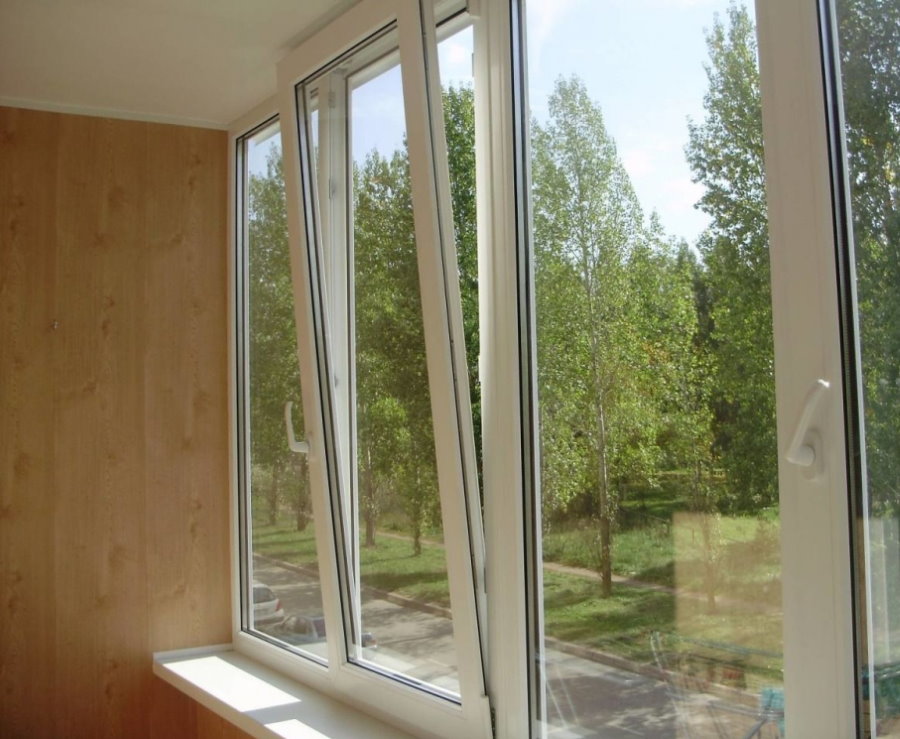
Swing-out plastic window
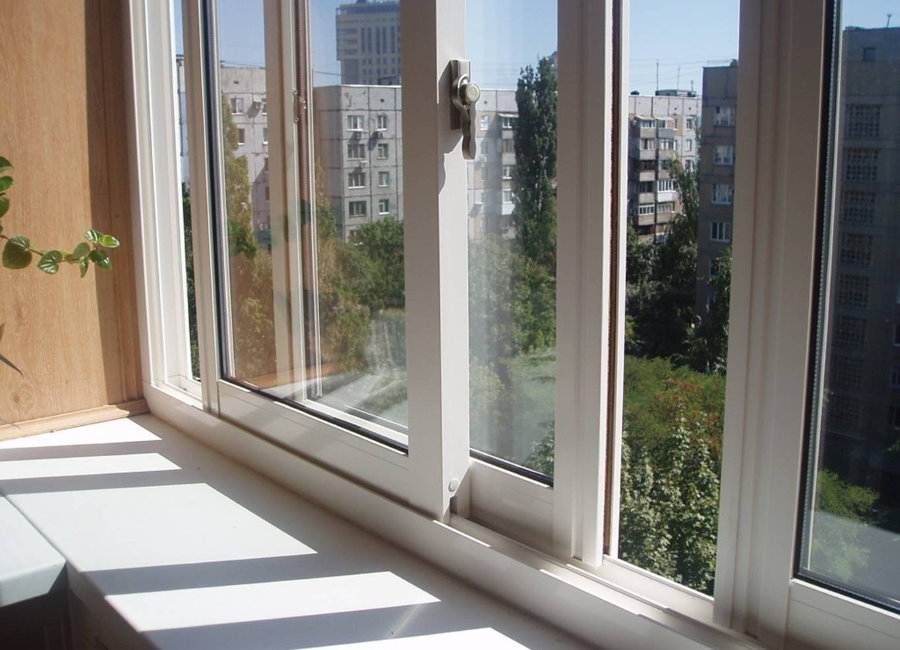
Glazed plastic glazing
The main minus is the appearance. Not everyone attracts him. And, of course, the price tag for the work. It is directly dependent on the complexity of the work. And, sometimes, installation can cost a pretty penny.
Aluminum
Balcony glazing with an aluminum profile is the best option for large loggias. In addition, with its help you can make any glazing of loggias.
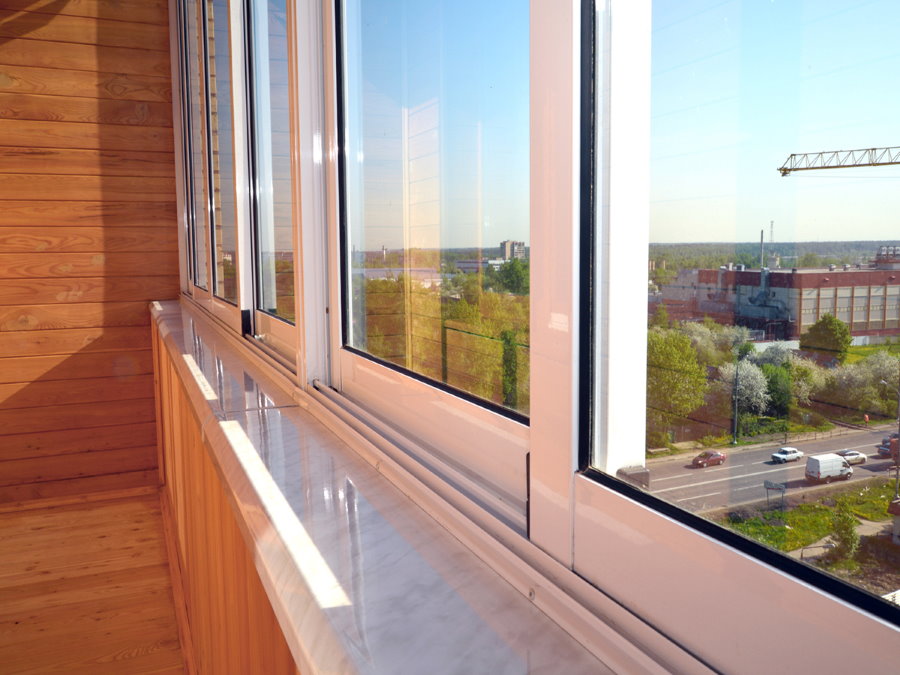
Windows with an aluminum profile are chosen by those who prefer cold glazing
For cold, several separate glasses are used, since the main task of this design is protection from wind, dampness and other weather troubles. A popular version of “cold” glazing is sliding. The frames are installed on a special profile, thanks to which they can be shifted to the side. Its main disadvantage is the lack of complete tightness and the presence of cracks eliminated by anther brushes.
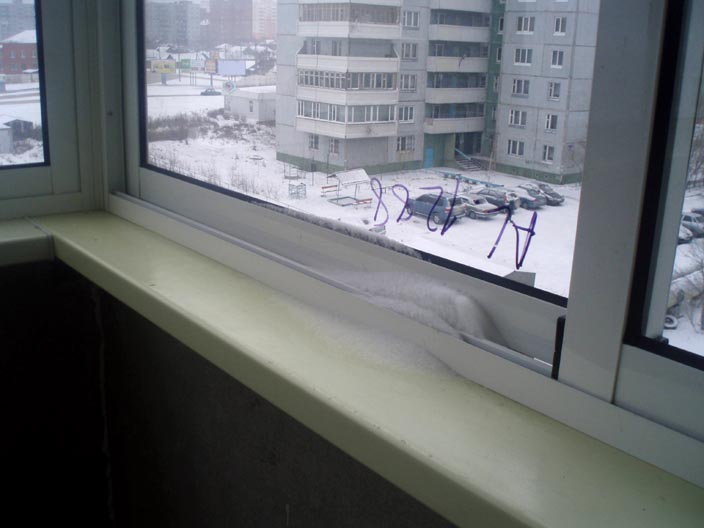
Without additional sealing, snow will blow out into the sliding windows
An aluminum loggia or aluminum balconies made of sleek material for “warm” is often done according to the “accordion” principle, the so-called transformer glazing used for terrace loggias of private houses. In classical high-rise buildings, there is practically no need for this, since there is a slightly different layout.
Glazing schemes
Do not forget about the design of glasses. The Internet is full of recommendations on this topic. The most interesting and universal are presented below.

Glazing of the balcony can be frame or frameless
French glazing
All salt of this method consists in external increase and simplification of a design. The French window to the balcony is a very stylish design element for additional space. It is preferable to use it in green areas, or in private homes.In other words, the main criterion is the proper external side of the structure.

A glass wall with French windows looks profitable and is very different from ordinary balconies
There are three main ideas for glazing:
- No exit area (mini-balcony).
- Semicircular (corner apartments).
- Easy and complete.
Frameless glazing
If the French glazing of the loggia, despite the abundance of glass, is characterized by the presence of at least some frames, then this scheme completely refuses them. Traditionally, it is made from certain sections, which causes some difficulties during installation, but, despite this, it is very popular, despite the complexity of the care. It is decorated with other objects (gardens, greenhouses, verandas, etc.). In the schemes of many new buildings, this particular technique of glass insertion is indicated.
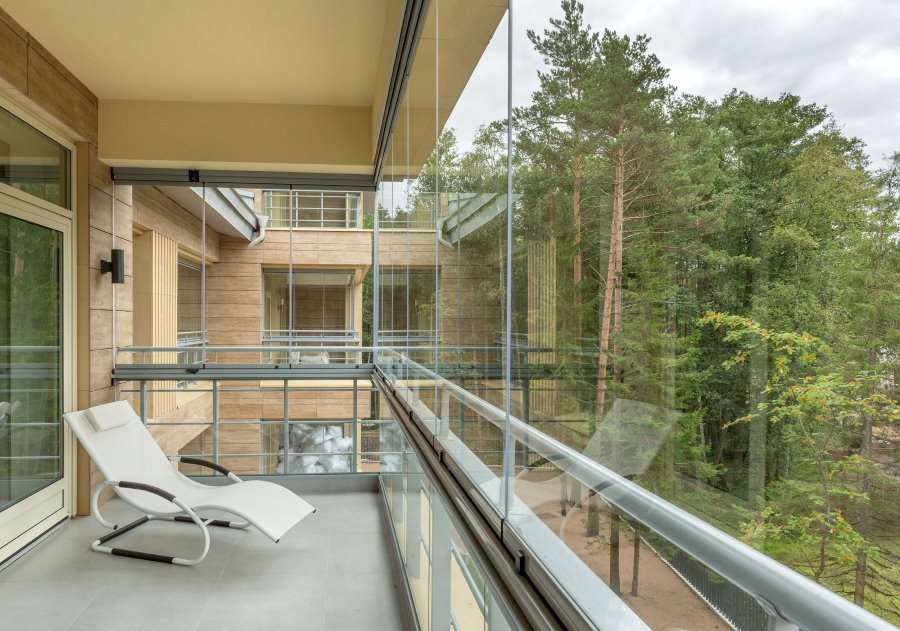
In frameless structures, the function of the fencing is performed by thick tempered glass with processed edges
Glazing with removal
There are two types of this method - extension along the windowsill and floor. In the first case, the space expands downward, in the second - to the side. To a large extent, this is done to store things or flowers.
Doing something like this yourself is quite easy, but it's better to contact a professional - he will take into account those nuances that an unprepared person will not pay attention to. The main criterion is the place of expansion. Window sill and floor, respectively. The difference is only in the principles of work and accents of gravity. All this does not look very bulky and that is why these forms are in great demand.
Dimming glazing
The principles are the same as in the previous schemes. The only question is the degree of darkness. This is done only if it is necessary to protect the attached place from exposure to ultraviolet rays. But, keep in mind that the film used this has its effect on the temperature regime.
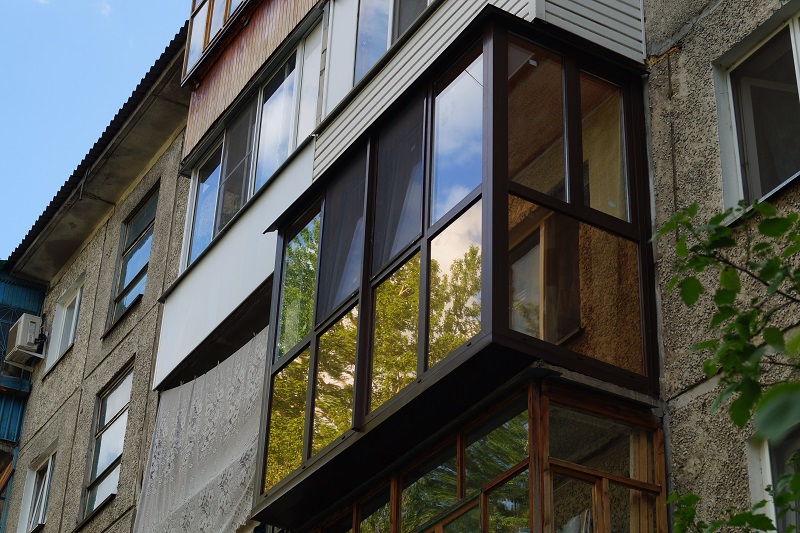
Partially darkened balcony at the bottom of the french window
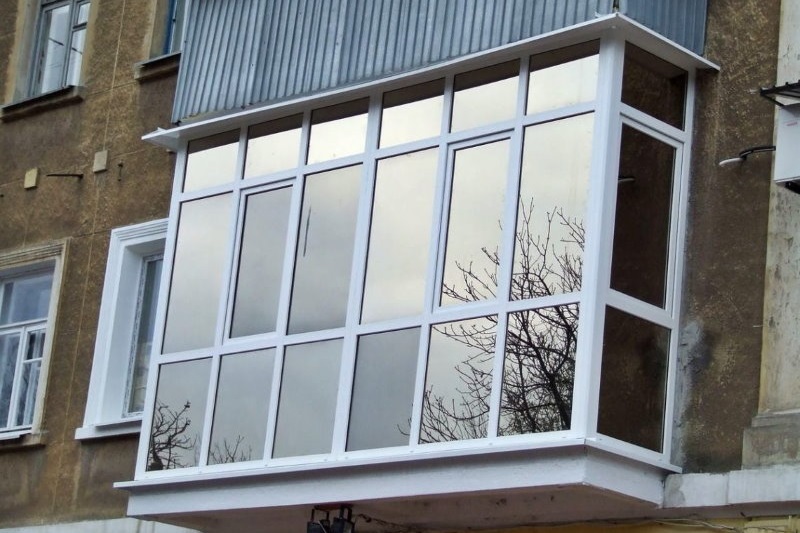
French balcony with fully tinted windows
Glazed balcony trim
- Ceiling Finish. It is only done when enclosed spaces are being constructed. In open areas, there are no special troubles. But, all the same, do not neglect this site, as it is a protection against precipitation and wind. There are no secrets as such. The main thing is to observe safety precautions.
- Wall decoration. As in the example above, this stage is relevant only for enclosed spaces. But, an important point, in the open balconies located in the middle of the house, you should make as strong walls as possible. They are the most important foundation of any loggia zone. And although in private homes they can be made slightly weaker, you should not save on materials, it is better to overpay, but be sure of quality. The most popular option is a classic brick edging.
- Floor finish. The lower part is the most important in warm glazing of balconies, and in cold.
The main thing to observe:
- Each meter of floor must withstand at least 10 kg.
- Be sure to overwrite all the bumps.
- Temperature resistance of materials.
The most important thing at this stage is the rational use of available resources. Not the fact that quality will equal quantity. Therefore, take dense materials that are not afraid of any external influences.
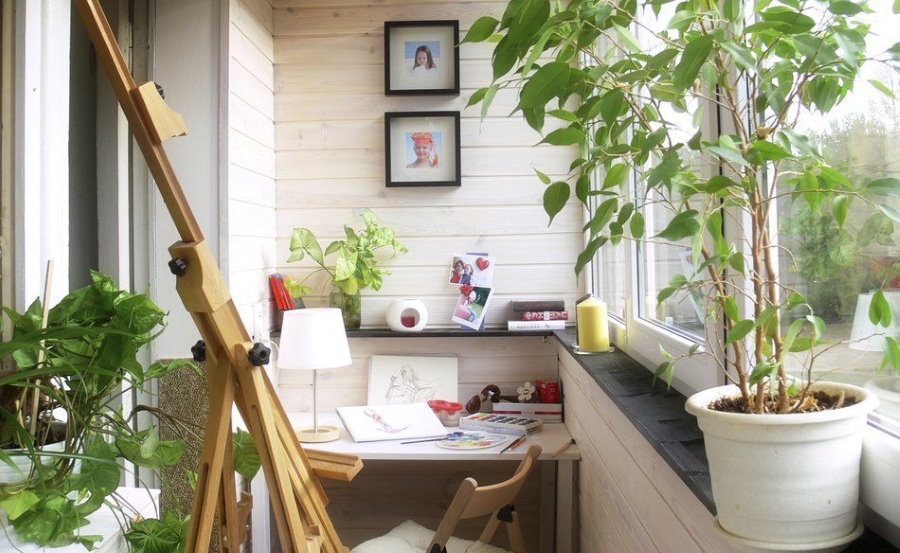
By glazing the balcony of your apartment, you will get an extra room, at least in the summer
Summarizing all of the above, we come to the conclusion that glazing a balcony is a rather time-consuming job and without some preparation it is impossible to do anything practical and reliable. The most important thing is not to rush. As they say, measure seven times - cut once.
Video: Details about the warm glazing of the loggia or balcony

